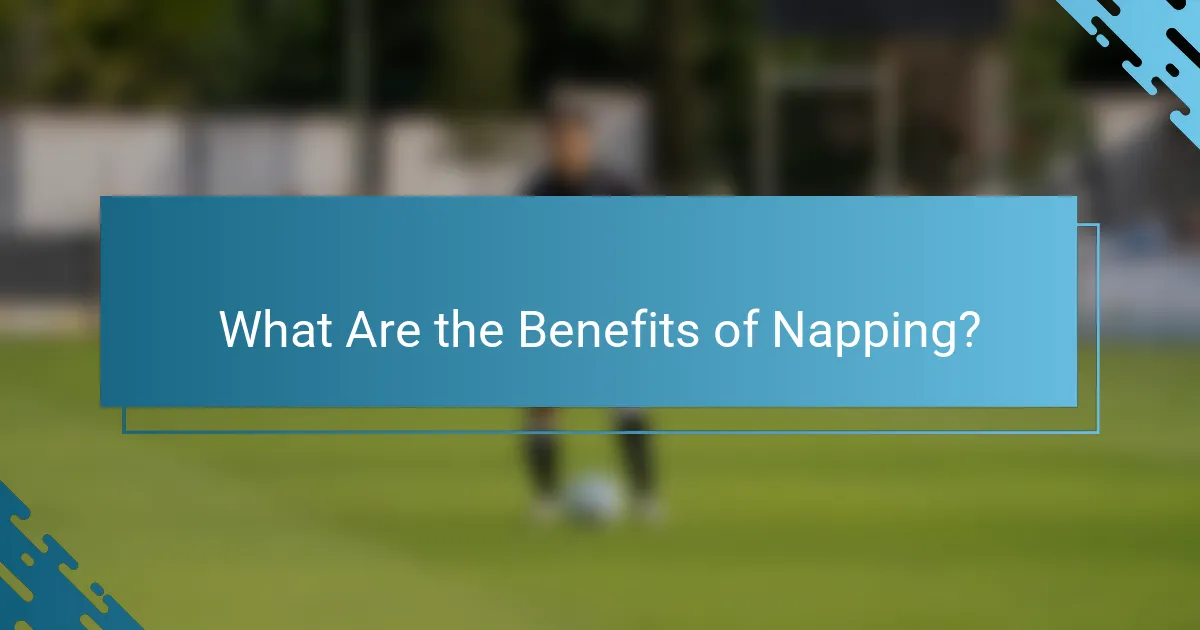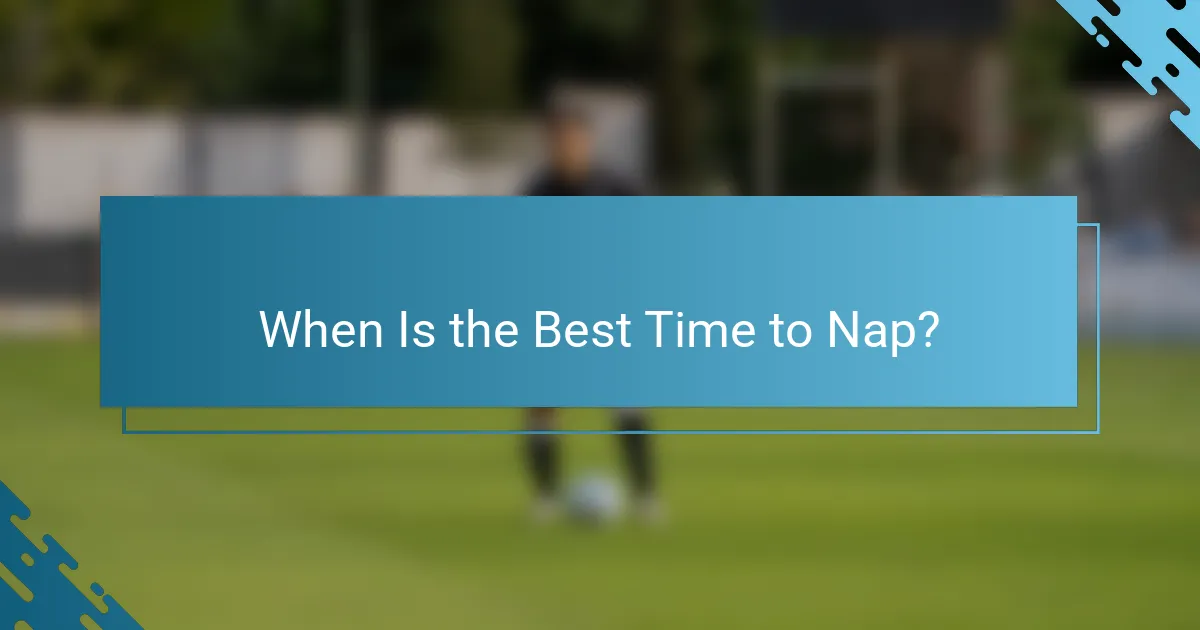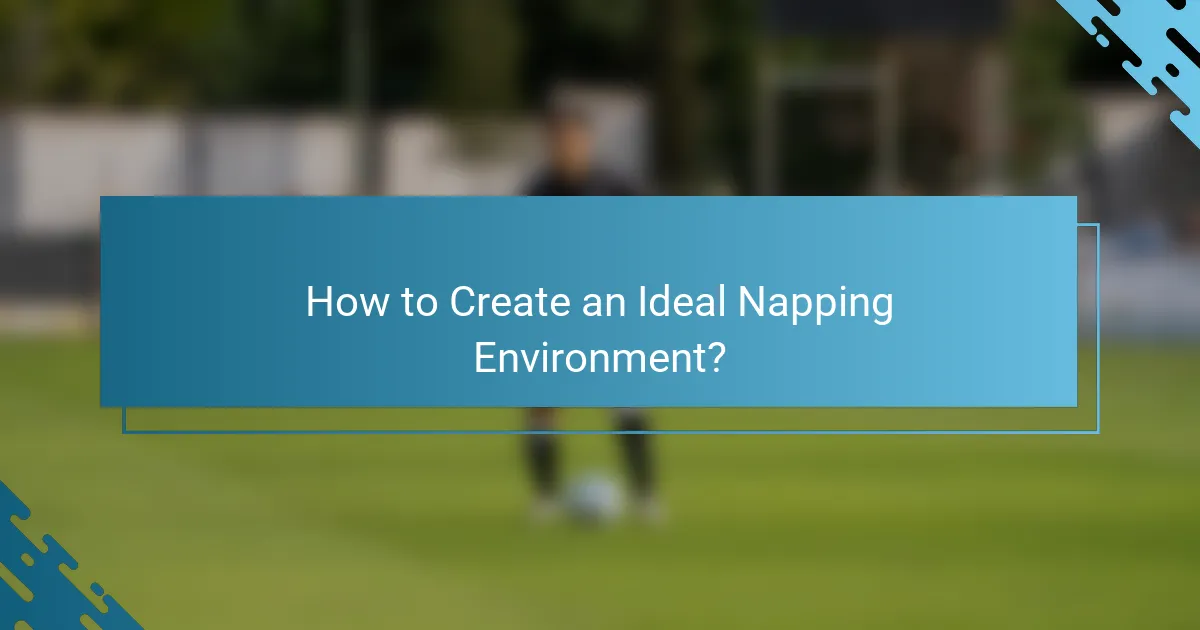Napping can be a powerful tool for enhancing alertness and productivity, with various techniques tailored to individual needs. By understanding the types of naps and their benefits, such as improved memory and reduced stress, you can optimize your daily performance. Timing your naps to coincide with your body’s natural rhythms, particularly in the early to mid-afternoon, can further enhance their effectiveness without disrupting nighttime sleep.

What Are the Best Napping Techniques?
The best napping techniques vary based on individual needs and circumstances, but they generally include short naps that enhance alertness and productivity. Understanding different types of naps can help you choose the most effective method for your lifestyle.
Power Nap
A power nap typically lasts between 10 to 20 minutes and is designed to boost alertness and energy without causing sleep inertia. This short duration allows you to wake up before entering deeper sleep stages, making it easier to resume activities immediately.
To maximize the benefits, find a quiet space, close your eyes, and set an alarm. Avoid napping too late in the day to prevent interference with nighttime sleep.
Siesta
The siesta is a longer nap, often lasting 30 minutes to 1 hour, traditionally taken in the early afternoon. This practice is common in cultures where midday breaks are part of the daily routine, allowing for recovery from morning fatigue.
When taking a siesta, aim to rest during the early afternoon, ideally between 1 PM and 3 PM. This timing aligns with the natural dip in alertness many people experience after lunch.
Ultradian Nap
An ultradian nap lasts about 90 minutes, allowing the body to complete a full sleep cycle. This type of nap can enhance creativity and memory retention by enabling deeper sleep stages.
To effectively take an ultradian nap, find a comfortable position and ensure you have enough time to sleep uninterrupted. This longer nap is best suited for those who can afford the time during their day.
Nap Cycle
A nap cycle refers to the duration of sleep needed to complete one full cycle of light and deep sleep, typically around 90 minutes. Understanding your nap cycle can help you wake up feeling refreshed rather than groggy.
Consider your schedule and energy levels when planning a nap. If you can manage a longer break, aim for a full cycle to maximize restorative benefits.
Strategic Napping
Strategic napping involves timing your naps to enhance performance in specific situations, such as before a long drive or a demanding task. This approach can help mitigate fatigue and improve focus when needed most.
To implement strategic napping, assess your daily schedule and identify times when you feel most tired. Plan your naps accordingly, ensuring they are short enough to avoid disrupting your overall sleep pattern.

What Are the Benefits of Napping?
Napping offers several benefits, including improved alertness, enhanced memory, reduced stress, and boosted creativity. These advantages can significantly impact daily performance and overall well-being.
Improved Alertness
Napping can lead to increased alertness, helping you feel more awake and focused. A short nap of around 10 to 20 minutes is often sufficient to recharge your energy levels without causing grogginess.
To maximize alertness, try to nap during the early afternoon when natural energy dips occur. Avoid longer naps that exceed 30 minutes, as they may disrupt nighttime sleep patterns.
Enhanced Memory
Napping has been shown to enhance memory retention and learning. A brief nap can help consolidate information learned earlier in the day, making it easier to recall later.
Studies suggest that napping for about 20 minutes can improve memory performance significantly. Consider incorporating naps into your study or work routine to boost cognitive function.
Reduced Stress
A short nap can be an effective way to reduce stress levels. By allowing your mind and body to rest, you can lower cortisol levels, which are associated with stress.
To achieve stress relief through napping, aim for a quick power nap when you start feeling overwhelmed. This can help clear your mind and improve your mood, making it easier to tackle tasks ahead.
Boosted Creativity
Napping can stimulate creative thinking by allowing your brain to make new connections. During sleep, the brain processes information and can lead to innovative ideas and solutions.
For those seeking a creative boost, consider a nap of around 30 minutes. This duration can help you wake up refreshed and ready to think outside the box.

When Is the Best Time to Nap?
The best time to nap typically falls in the early to mid-afternoon, aligning with the body’s natural circadian rhythms. Napping during this window can enhance alertness and improve cognitive function without interfering significantly with nighttime sleep.
Mid-Afternoon
Napping in the mid-afternoon, usually between 1 PM and 3 PM, can be particularly beneficial. This is when many people experience a natural dip in energy levels, making it an ideal time for a short rest. A nap of about 20-30 minutes can help rejuvenate the mind and body, boosting productivity for the remainder of the day.
To maximize the benefits, find a quiet space and set an alarm to avoid oversleeping. Longer naps may lead to grogginess, so keep it brief.
Post-Lunch
The post-lunch period, often around 1 PM, is another prime time for napping. After eating, the body directs energy towards digestion, which can lead to feelings of drowsiness. A short nap during this time can counteract that slump, enhancing alertness and performance.
Consider pairing your nap with a light lunch to minimize the risk of feeling sluggish afterward. Aim for a nap duration of 20 minutes to maintain a refreshed state without disrupting your nighttime sleep schedule.
Timing for Night Owls
For night owls, napping may require a different approach. If you tend to stay up late, a nap in the late afternoon or early evening can help bridge the gap until bedtime. However, it’s crucial to limit the duration to 20-30 minutes to prevent interference with your nighttime sleep.
Experiment with timing to find what works best for you, but avoid napping too close to your regular bedtime, as this could lead to difficulty falling asleep later. Keeping a consistent sleep schedule can also help regulate your body’s internal clock.

How Long Should a Nap Last?
A nap should typically last between 10 to 90 minutes, depending on the desired benefits. Short naps can enhance alertness, while longer naps may help with memory consolidation and recovery.
20 Minutes
A 20-minute nap is ideal for a quick boost in alertness and energy without entering deep sleep. This duration allows you to rest without experiencing sleep inertia, the grogginess that can occur when waking from deeper sleep stages.
To maximize the benefits of a 20-minute nap, find a quiet, comfortable space and set an alarm to avoid oversleeping. This short nap is particularly effective for improving focus and productivity, making it a great choice during a busy workday.
90 Minutes
A 90-minute nap allows you to complete a full sleep cycle, including light and deep sleep stages. This duration can enhance creativity, improve memory retention, and aid in emotional regulation.
Consider scheduling a 90-minute nap if you have the time, especially after a night of poor sleep. This length is beneficial for those who need to recover from sleep deprivation or are preparing for a night shift.
Recommended Duration
The recommended nap duration varies based on individual needs but generally falls between 20 to 90 minutes. For a quick pick-me-up, aim for 20 minutes; for more restorative benefits, opt for 90 minutes.
Experiment with different lengths to find what works best for you. Keep in mind that napping too late in the day can interfere with nighttime sleep, so aim to nap in the early afternoon for optimal results.

What Are the Common Misconceptions About Napping?
Many people hold misconceptions about napping, believing it to be a sign of laziness or detrimental to nighttime sleep. In reality, napping can be a beneficial practice that enhances alertness and productivity when done correctly.
Napping Is for the Lazy
This belief stems from a cultural stigma that equates productivity with constant activity. However, research shows that short naps can improve cognitive function and overall performance, making them a smart choice for busy individuals.
In fact, many successful professionals incorporate naps into their routines to recharge. A quick 20-minute nap can boost creativity and problem-solving skills, proving that napping is a strategic tool rather than an indulgence.
Naps Disrupt Night Sleep
While it’s true that poorly timed naps can interfere with nighttime rest, strategic napping can actually enhance sleep quality. A brief nap of 20-30 minutes taken in the early afternoon is less likely to disrupt your nighttime sleep compared to longer or later naps.
To avoid potential disruptions, aim to nap before 3 PM and keep it short. This way, you can enjoy the benefits of napping without negatively impacting your sleep cycle.

How to Create an Ideal Napping Environment?
To create an ideal napping environment, focus on minimizing distractions and optimizing comfort. Key elements include controlling light, noise, and temperature to promote restful sleep.
Dark Room
A dark room is essential for effective napping as it signals your body to produce melatonin, the hormone that regulates sleep. Block out any light sources, including streetlights or electronic devices, to enhance your ability to fall asleep quickly.
Consider using blackout curtains or an eye mask to achieve complete darkness. If total darkness isn’t possible, using a sleep mask can significantly improve your napping experience.
Remember to check for any light leaks around windows or doors and seal them if necessary. A dark environment not only helps you nap better but also makes it easier to wake up feeling refreshed.
